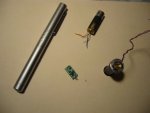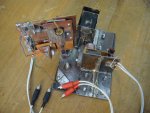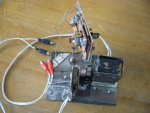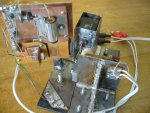- Joined
- Apr 28, 2009
- Messages
- 63
- Points
- 8
You just adjust the max value of the current to be the Imax of the laser diode.
If the video signal becomes too high somewhere while experimenting, power supply will fail to supply current greater than Imax. It is that simple.
After finding the critical values of all parameters you may replace yor source with a constant Vcc.
Sorry, English is not my mother language. Maybe I cannot express myself correctly.
Edit: The current limitting power supply in that picture is not a DDL. It can deliver any current below the limitting value to the circuit
picture is on page5 post 124
If the video signal becomes too high somewhere while experimenting, power supply will fail to supply current greater than Imax. It is that simple.
After finding the critical values of all parameters you may replace yor source with a constant Vcc.
Sorry, English is not my mother language. Maybe I cannot express myself correctly.
Edit: The current limitting power supply in that picture is not a DDL. It can deliver any current below the limitting value to the circuit
picture is on page5 post 124
Last edited:








